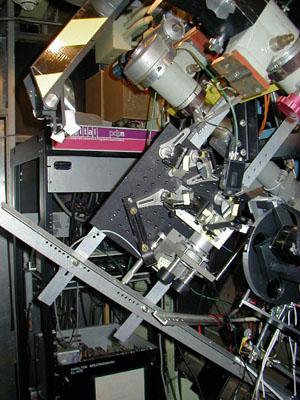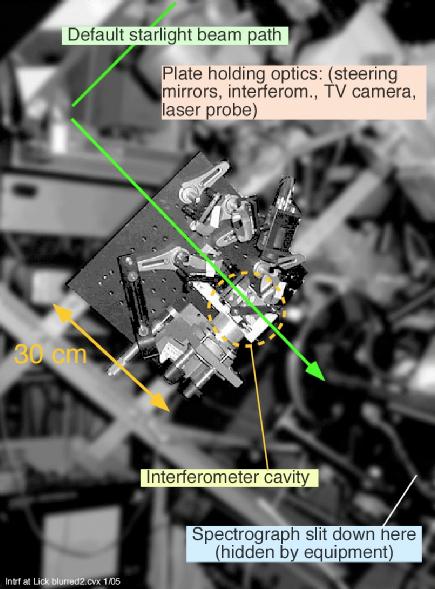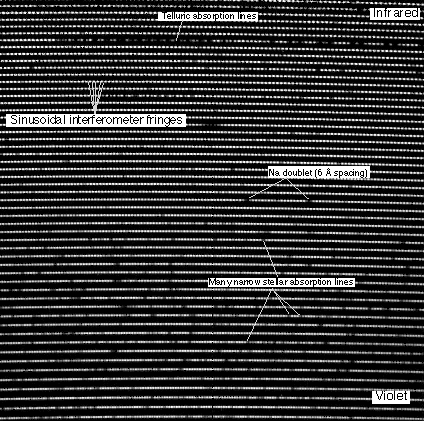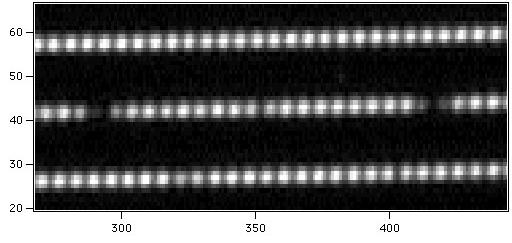Demonstration of EDI on an Echelle Grating Spectrograph at Lick Observatory |
|
 |
|||||||
 |
|||||||
Interferometer (on 30x30 cm plate) inserted into starlight beam in front of slit of Lick Obs. echelle spectrograph for preliminary tests. |
|||||||
Echelle spectrographs have superior bandwidth and are the most important type of astronomical spectrograph. They record spectra on a CCD chip in a raster scan format to produce a much wider bandwidth than a linear grating spectrograph. For example, the Lick echelle has a bandwidth from 8000 to 4000 Angstroms. In comparison, the linear spectrograph we used for solar demonstrations only had a ~130 Angstroms. The large bandwidth means much greater photon flux for velocimetry, making observations of weaker stars that bear planets feasible. |
|||||||
 |
||||
Fringing spectra of epsilon-Leo. Wavelength decreases from left to right, and top to bottom in a raster scan format. Interferometer creates very evenly spaced "beads" that overlays stellar spectrum. The beads act as fiducials that improve the robustness against grating irregularities. In order to measure the Moire patterns, at 3 exposures are taken while stepping the interferometer delay by 120°. |
||||
 |
|
Closeup of a spectrum of Epsilon Leo, showing the Na doublet (6 Angstroms apart) and the periodic interferometer fringes. For more info see Ref. 7 |
||
www.SpectralFringe.org site maintained by |
||||